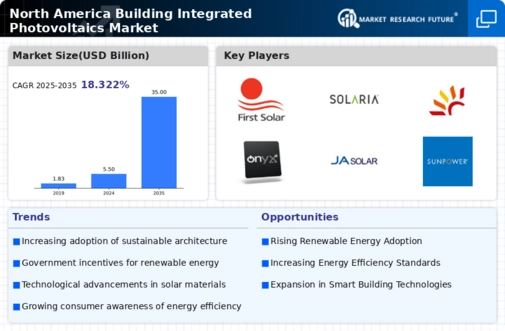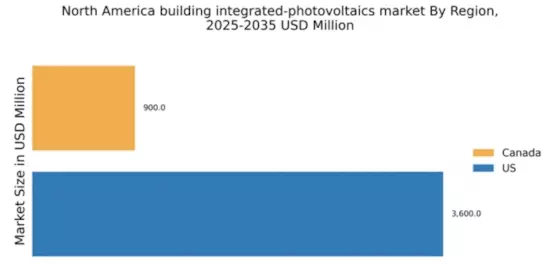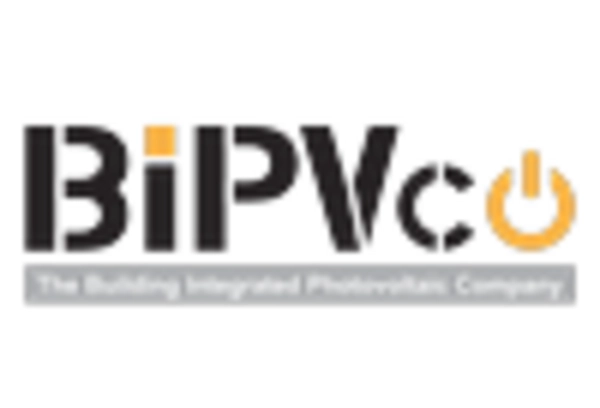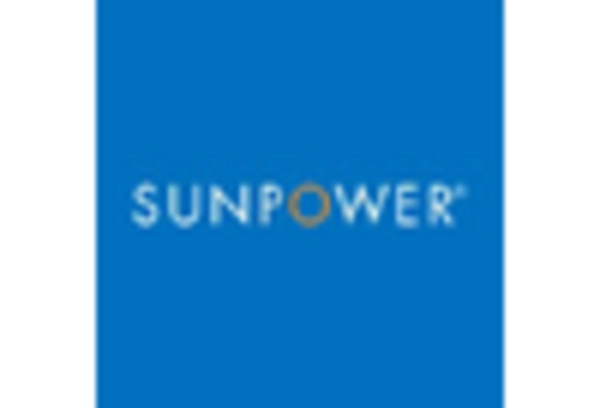The building integrated-photovoltaics market is currently characterized by a dynamic competitive landscape, driven by increasing demand for sustainable energy solutions and advancements in solar technology. Key players such as Tesla (US), SunPower (US), and Onyx Solar (ES) are at the forefront, each adopting distinct strategies to enhance their market positioning. Tesla (US) focuses on innovation through its solar roof technology, which integrates seamlessly with building designs, while SunPower (US) emphasizes partnerships with construction firms to expand its reach in residential and commercial sectors. Onyx Solar (ES) is leveraging its expertise in architectural integration, positioning itself as a leader in aesthetic solar solutions, thereby appealing to architects and builders seeking to incorporate renewable energy into their designs.
The business tactics employed by these companies reflect a trend towards localizing manufacturing and optimizing supply chains to enhance efficiency and reduce costs. The market structure appears moderately fragmented, with several players competing for market share, yet the influence of major companies is substantial. Their collective efforts in innovation and strategic partnerships are reshaping the competitive environment, fostering a climate where technological advancements are paramount.
In October 2025, Tesla (US) announced a significant expansion of its solar roof production capabilities, aiming to increase output by 50% over the next year. This move is strategically important as it not only addresses the growing demand for integrated solar solutions but also positions Tesla to capture a larger share of the residential market, where consumer interest in sustainable building practices is surging.
In September 2025, SunPower (US) entered into a partnership with a leading construction firm to develop a series of eco-friendly residential projects that incorporate its solar technology. This collaboration is indicative of a broader trend where solar companies are aligning with construction entities to streamline the integration of renewable energy solutions into new builds, thus enhancing market penetration and visibility.
In August 2025, Onyx Solar (ES) launched a new line of transparent solar glass, which allows natural light to permeate while generating energy. This innovation is crucial as it addresses aesthetic concerns often associated with traditional solar panels, potentially broadening the appeal of solar technology in urban environments where design is a priority.
As of November 2025, the competitive trends in the building integrated-photovoltaics market are increasingly defined by digitalization, sustainability, and the integration of artificial intelligence in energy management systems. Strategic alliances are becoming more prevalent, as companies recognize the value of collaboration in enhancing technological capabilities and market reach. Looking ahead, competitive differentiation is likely to evolve from traditional price-based competition to a focus on innovation, technological advancements, and the reliability of supply chains, as companies strive to meet the growing expectations of environmentally conscious consumers.


















Leave a Comment